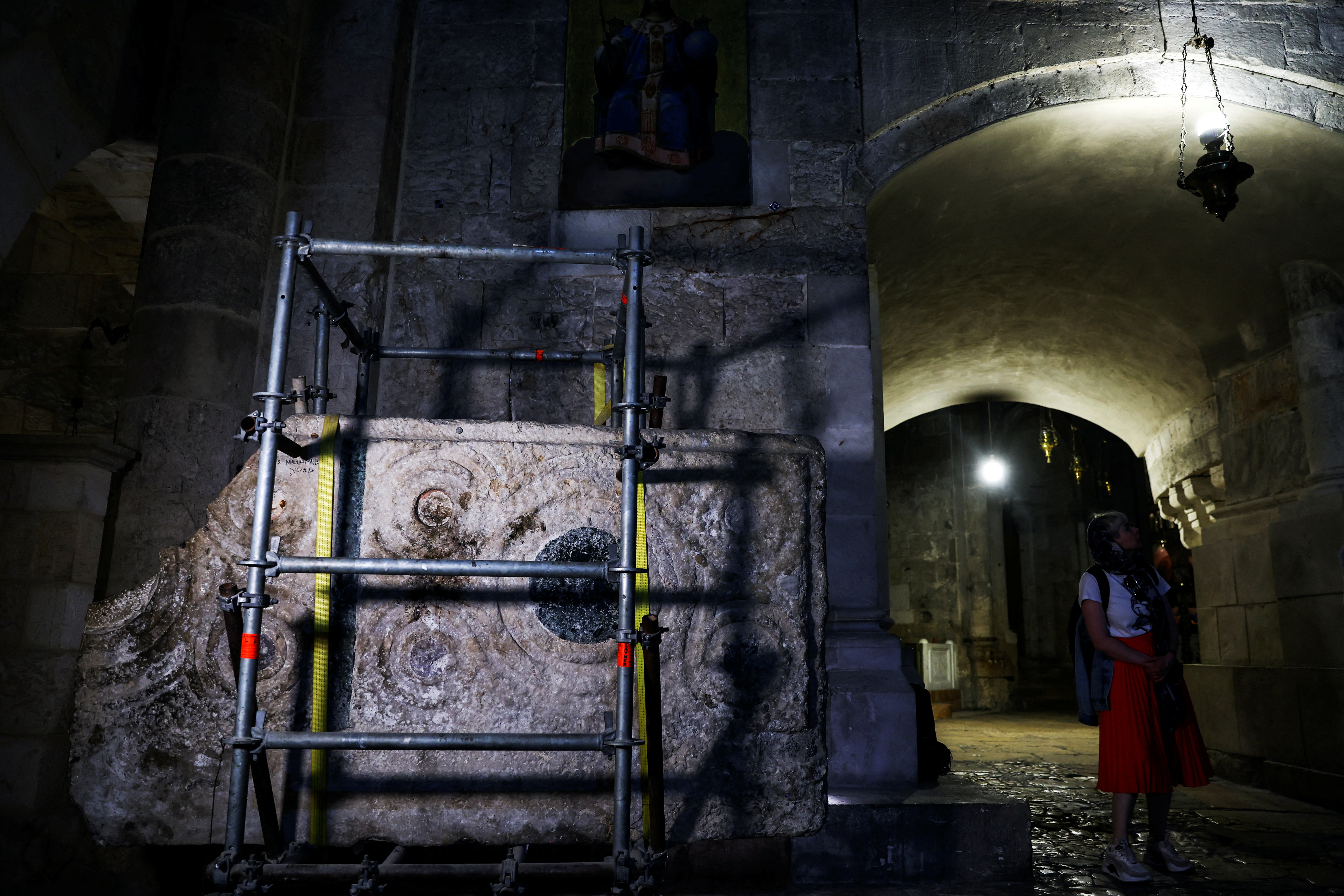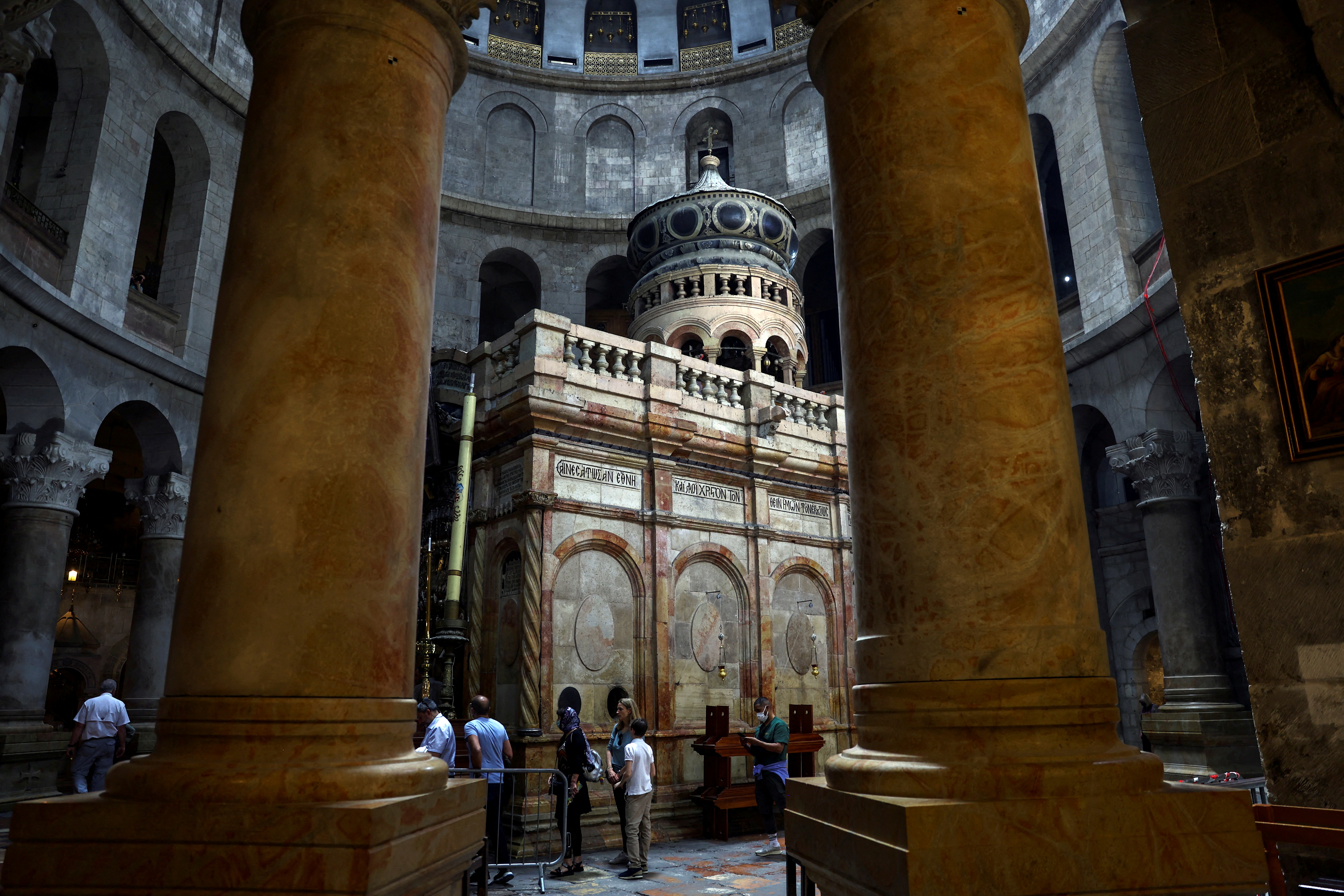The Ancient Past Calls Out
"You cannot see it now, but originally it was inlaid with pieces of precious marble, pieces of glass, pieces of small, finely made marble.""It was shining and this was a really amazing artifact. It stood at the apex, at the sanctuary of the Church [of the Holy Sepulchre].""All the eyes of the believers, of the pilgrims [went] to this object. And right above it and around it, all the high priests, the priests and the monks of the church did all the liturgy, the main liturgy of the church, on the table, right here on the table of this altar.""It was forgotten in the mist of time for decades until we rediscovered it a few years ago."Amit Re'em, Jerusalem regional archaeologist, Israel Antiquities Authority"Works from people of art, people of archeology, contribute to us, contribute to the belief of the church, to the conviction of the church, that this is the place ... on which Jesus Christ was crucified ... buried and from which he came to resurrection."Archbishop Aristarchos of Constina, chief secretary, Greek Orthodox Patriarchate of Jerusalem
 |
| A stone slab said to be the decorated frontal of the Crusader-era high altar of the Church of the Holy Sepulchre according to researchers at the Israel Antiquities Authority and Austrian Academy of Sciences, is seen in the Church of the Holy Sepulchre after it was recently turned over during renovations and its significance rediscovered, in Jerusalem's Old City, April 11, 2022. Picture taken April 11, 2022. REUTERS/Ronen Zvulun |
It was just an obscure stone slab of an early period in history standing in an ancient church in one of the most historical sites of world history. Left over the ages pressed close against a wall in a far corridor of the Church of the Holy Sepulchre in Jerusalem. On its readily visible, outward-facing side was graffiti, testament to the multitudes of pilgrims through the ages that had come to Jerusalem to pray and to revel in the church's antiquity, leaving a memento of themselves and their awe at its sacred presence, inscribed on the stone slab.
And then, because the church, celebrated as the site of Jesus's crucifixion and burial and traditionally venerated for that tradition, began undergoing renovation, and the 2.5 X 1.5-metre stone slab was moved, revealing its opposite side where elaborate looping ornaments were discovered on the long-hidden portion. Which enabled archaeologists to identify it as the decorated frontispiece of a medieval high altar in one of Christendom's holiest cities.
Research on the origins, purpose and condition of the ancient slab was carried out by two archaeologists; Amit Re'em, Jerusalem regional archaeological representative of the Israel Antiquities Authority and his colleague Ilya Berkovich of the Austrian Academy of Sciences. They were able to identify as "Cosmatesque" the unique, looping design etched deeply into the stone piece that once served as part of the church's original altar. A technique that embodied Classical Byzantine and early Islamic art where tiles of colourful marble were set into the circular engravings.
The two researchers were familiar with the style of decoration since similar ones were found within churches in Rome that date to the 12th and 13th centuries. The Jerusalem relic corresponds with past archaeological findings, alongside accounts of pilgrims describing the consecration of the church by the Crusaders when the main altar was formed, in the year 1149.
Catholic clergy made use of the altar in celebrating mass up to the time the Crusaders left Jerusalem, after which it saw use by the Greek Orthodox church until a fire in 1808 damaged it, when it was cast aside and forgotten until recent renovations were undertaken, explained Amit Re'em. The findings of the researchers are to be published by the Exploration Society of Israel.
 |
| People visit the Church of the Holy Sepulchre in Jerusalem's Old City, April 11, 2022. REUTERS/Ronen Zvulun/File Photo |
Labels: Altarpiece, Archaeology, Church of the Holy Sepulchre, Israel, Jerusalem

0 Comments:
Post a Comment
<< Home